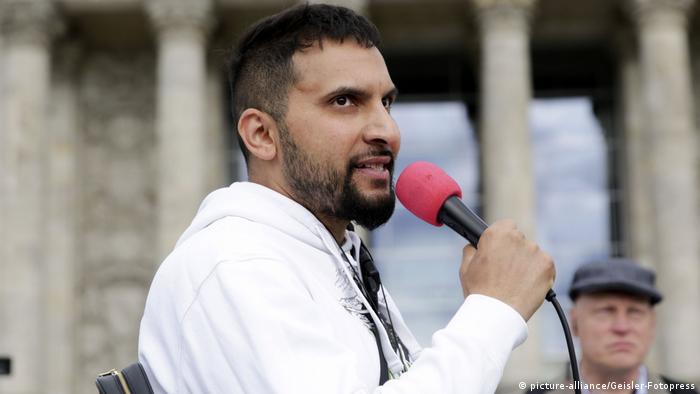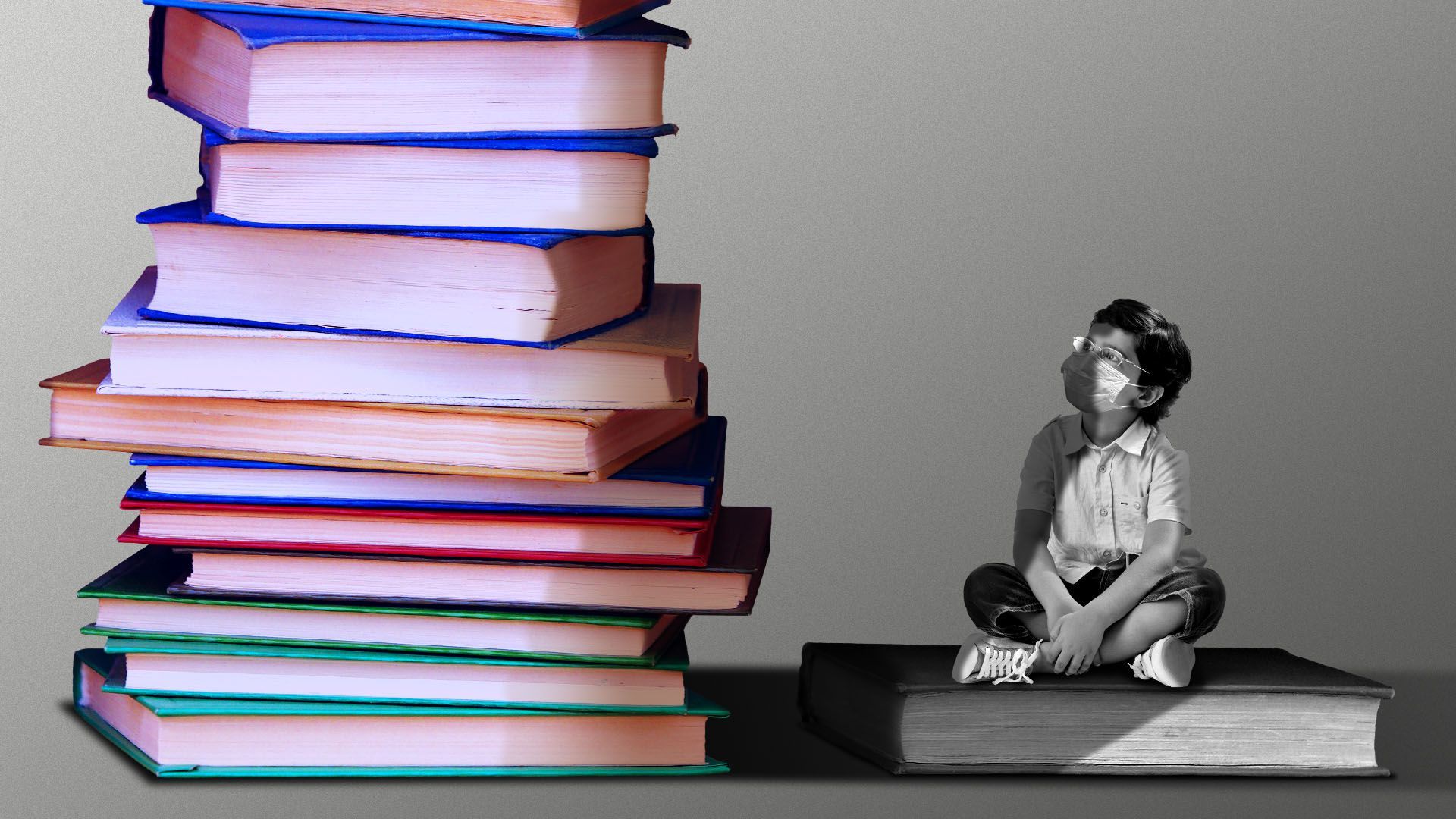By JOHN LEICESTER

Nantaga Sanguannoi poses for photo during her evening walk at Lumpini park Bangkok, Thailand on Tuesday, July 21, 2020. Sanguannoi, works as a registered nurse in a hospital in Bangkok. "I want everyone to know it is easy to prevent spreading of COVID-19 by wearing a mask. Lot of resources have been utilized, and economies have been shattered because of the virus. If we can prevent spreading of the virus those resources can be utilized to help already affected poor people, think about it" said Sanguannoi. (AP Photo/ Gemunu Amarasinghe)
SAINT-GERMAIN-EN-LAYE, France (AP) — House keys, wallet or purse, mobile phone and .... oh, yes: face mask.
Reluctantly for many, but also inexorably in the face of a deadly invisible enemy, small rectangles of flimsy yet live-saving tissue have in mere months joined the list of don’t-leave-home-without-them items for billions around the world.
Not since humans invented shoes or underwear has a single item of dress caught on so widely and quickly from Melbourne to Mexico City, Beijing to Bordeaux, spanning borders, cultures, generations and sexes with almost the same Earth-shaking speed as the coronavirus that has killed more than 600,000 and infected more than 15 million.

Syrian Orthodox priest, Shimon Jan, 70, poses for a portrait wearing his protective face mask in the alleys of Jerusalem's Old City, Tuesday, July 21, 2020. Jan says "I'm advising to everyone to wear face masks not only because of the law also because life is the most important thing". (AP Photo/Oded Balilty)
“There has, perhaps, never been such a rapid and dramatic change in global human behavior,” says Jeremy Howard, co-founder of #Masks4All, a pro-mask lobbying group. “Humanity should be patting itself on the back.”
But rarely, also maybe never, has anything else worn by humans sparked such furious discord and politicking, most notably in the United States. Did anyone on an American beach ever pull a gun on someone for wearing a bikini, as an unmasked man did on a masked shopper this month at a Florida Walmart?
As such, like other human habits, the mask has become a mirror on humanity. That so many people, with varying degrees of zeal, have adapted to the discomfort of masking their airways and facial expressions is powerful medicine for the belief that people are fundamentally caring, capable of sacrifice for the common good.
From Marsha Dita, a social media freelancer in Jakarta, Indonesia, comes a view succinctly put, and increasingly widely shared: “This is not the time to be selfish.”
Yet also apparent from outbreaks of fierce resistance to masks, especially in democracies, is this: Plenty of people don’t like being told what to do and distrust the scientific evidence that masks curb contamination.
Cries that masks muzzle freedom have been vociferously aired at rallies in the United States, Canada and, last Sunday, in London. There, a speaker at a protest against the introduction this Friday of mandatory mask-wearing in Britain’s stores argued: “People die every year. This is nothing new.”

62-year-old fruit vendor Peda Tuazon poses at her stall in Manila, Philippines on Tuesday, July 21, 2020. Tuazon said she will convince the person to wear a mask to prevent the spread of COVID. (AP Photo/Aaron Favila)
Skepticism shared by, among others, Mohammed al-Burji, a 42-year-old civil servant in Lebanon. Walking to work without a mask, violating laxly enforced rules that they be worn everywhere outside the home, he said: “There is no coronavirus, brother. They’re just deceiving people.”
The country has reported over 3,100 infections and 43 deaths, and senior officials have made public appeals for people to stick to mask wearing and social distancing.
The same human reflexes that cause people to size up each other’s fashion choices, haircuts and alike on first meeting are now instinctively applied to masks, too.
In Mexico City, Estima Mendoza says she cannot help but recoil at people without masks. “I feel defenseless. On one hand I judge them and on the other I ask myself ’Why?” Mendoza said. ”As human beings, we always judge.”
As a Black Muslim woman in France, Maria Dabo knows that feeling all too well. For her, the adoption of masks has had an unexpected but welcome side effect: She no longer feels such a standout in the country that has legislated to prevent Muslim women from wearing face-covering veils. With masks required in all indoor public spaces, the French far-right’s long obsession with Islamic veils has been muted.

Pakistani Wasim Abbas poses for a photo after talking with the Associated Press in Islamabad, Pakistan, Wednesday, July 22, 2020. Abbas lives in rural Pakistan where 20 per cent of people he says are still not convinced that coronavirus is a reality. "They think it is a rumor." Abbas says he doesn't wear a mask in the village. Why? He asks. If they are effective it is only when indoors and in a crowd, but in the countryside Abbas says rarely are they worn. (AP Photo/Anjum Naveed)

Tatyana Khrupina, speaks standing in Nikolskaya street near Red Square during her interview with the Associated Press in Moscow, Russia, Tuesday, July 21, 2020. "It has its minimal usefulness, but it is definitely not what you should start with," Tatyana Khrupina told The Associated Press, adding that she doesn't "really believe" in the effectiveness of a mask. (AP Photo/Alexander Zemlianichenko)

Mohammad Karbalaei wearing no protective face mask speaks with The Associated Press at Tehran's Grand Bazaar, Iran, Wednesday, July 22, 2020. "There is no special reason I'm not wearing a mask. Ever since they said the (new) coronavirus has come to the country I didn't care and I never got infected." Mohammad Said. (AP Photo/Vahid Salemi)
Also muddying and fueling global debate has been mixed messaging from government leaders who flip-flopped on the utility of masks and advised against their public use when stocks were so lacking that health workers cared for the sick and dying without adequate protection.
Chief among the U-turners is U.S. President Donald Trump, who first wore a mask in public only after COVID-19 had killed at least 134,000 Americans and tweeted this week that mask-wearing is a patriotic act.
Months of resistance preceded that tweet — resistance that causes head-scratching in autocratic China, which has quashed debate about how the pandemic started and was handled there.
“People in other countries ask for freedom. But they are actually losing it, because they have seen a rapid increase in infected cases,” said Liu Yanhua, an insurance worker.
Even within households, masks divide. Yu Jungyul, a child-health worker in Seoul, South Korea, says she has to nag her husband to wear one, telling him: “‘We have to wear masks for other people now, rather than only for ourselves.’”

Estelle Fitz poses for a photo as she stands on Westminster Bridge in London, Wednesday, July 22, 2020. "You should wear a mask for the safety of everyone, i'm sure thats the biggest reason for it, you have to think about the other people" (AP Photo/Kirsty Wigglesworth)
In Australia, the introduction this week of mandatory face coverings in Melbourne came with a plea from the region’s premier, Daniel Andrews, for masks to be incorporated into life’s routines.
“Most of us wouldn’t leave home without our keys, we wouldn’t leave home without our mobile phone. You won’t be able to leave home without your mask,” he said.
Trend-setters are setting the tone, too. Fashion historian Kimberly Chrisman-Campbell, author of “Worn On This Day: The Clothes That Made History,” notes that “fashions spread through emulation,” and can sprint around the globe in minutes on social media. She suggests that “seeing more prominent people — like actors, models, social media personalities, or politicians — wearing them on TV or in social media would have an immense impact.”
“The decision to wear a mask — or NOT wear one — also offers people the illusion of control at a time when everything seems wildly out of control,” she argues.
Then there are the practicalities. Masks are an unaffordable luxury for those in extreme poverty and are making painful dents in the budgets of modest families. Says Wasim Abbas, a villager in Pakistan: “Some people are poor. They have not been given masks.”
In heat, masks can be a torment. In Lagos, Nigeria, mask-less street trader Jibola Costello said he had to peel his off for a cool-down breather. “That’s why I removed it.”
And in France, fruit and vegetable seller Montassar Yoinis noticed that shoppers shun his stand if his face is uncovered. So he compensates by yelling loudly through his surgical mask: “Hello Monsieur, don’t hesitate to taste the cherries!”
“It’s a bit of a bother, but we have no choice,” he said. “People are wary when you don’t wear a mask. They don’t come.”

Fishmonger Sante De Luca wears a surgical mask as he poses in his stall at a market in Rome, Tuesday, July 21, 2020. "Masks need to be worn, full stop! It's not optional. It's a matter of respect for others. There might be no need to wear it while driving a car alone, but in public spaces, it must be used. While working I don't wear one at all times, but I always respect safe distancing." (AP Photo/Riccardo De Luca)
Shopping with her young kids (she was masked, they weren’t), French museum worker Celine Brunet-Moret said she misses not being able to see faces and “all the emotions people have. You don’t see people smiling or if they are OK or not.”
“It’s not the same life and it’s not the normal life, so I’m thinking that we’ll never get used to it, really get used to it,” she said.
But across the street from the shop where Brunet-Moret was buying pungent cheese, fabric store worker Laure Estiez said venturing out without one of her growing collection of about 30 home-made masks now feels “almost unnatural.” She says her new morning routine of picking colors and patterns to match her mood and outfits has “become a pleasure.”
“We have a very strong capacity for adaptation,” she said. “You get used to everything.”
___
AP journalists around the globe contributed to this report. Follow AP coverage of the pandemic at https://apnews.com/VirusOutbreak and https://apnews.com/UnderstandingtheOutbreak












